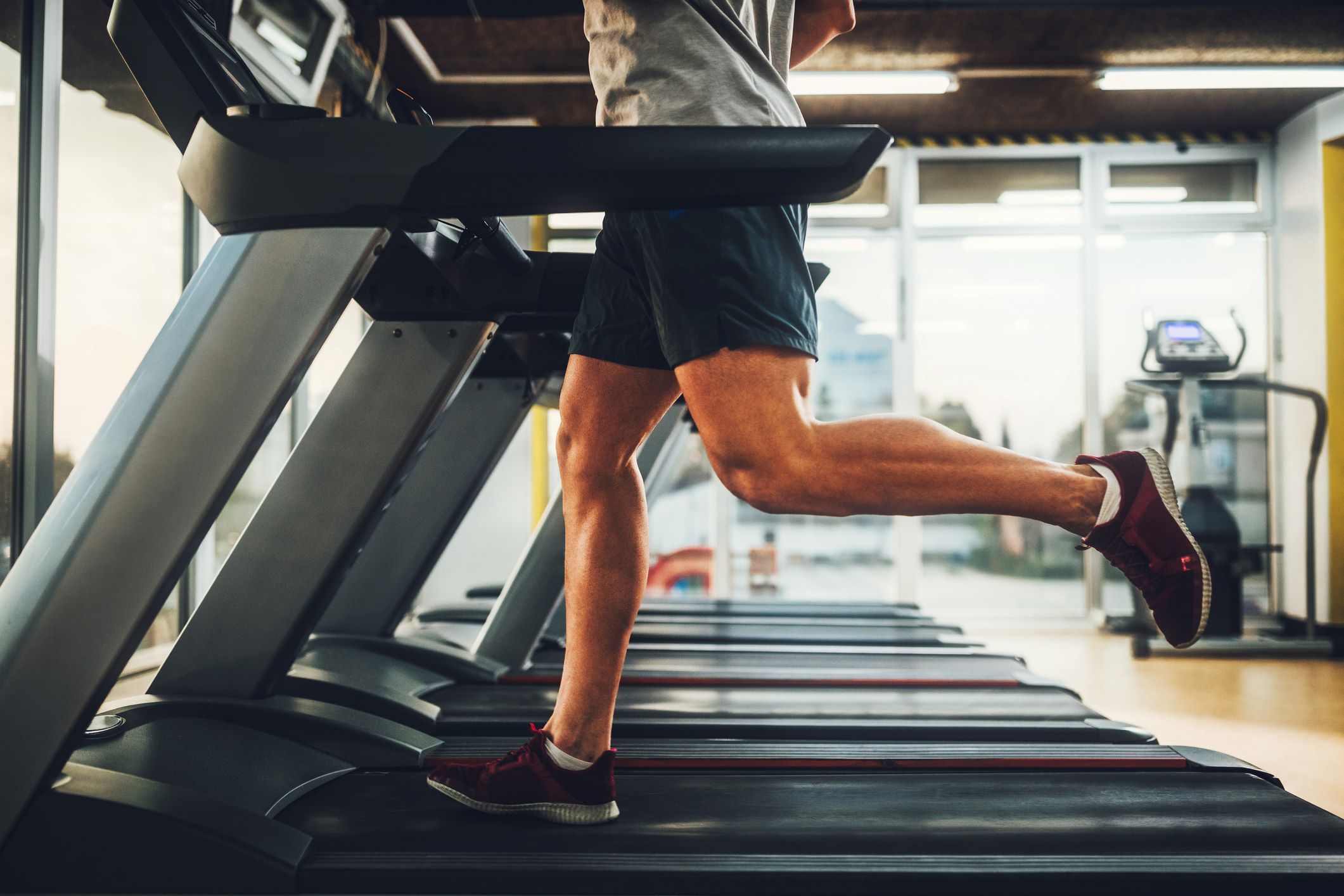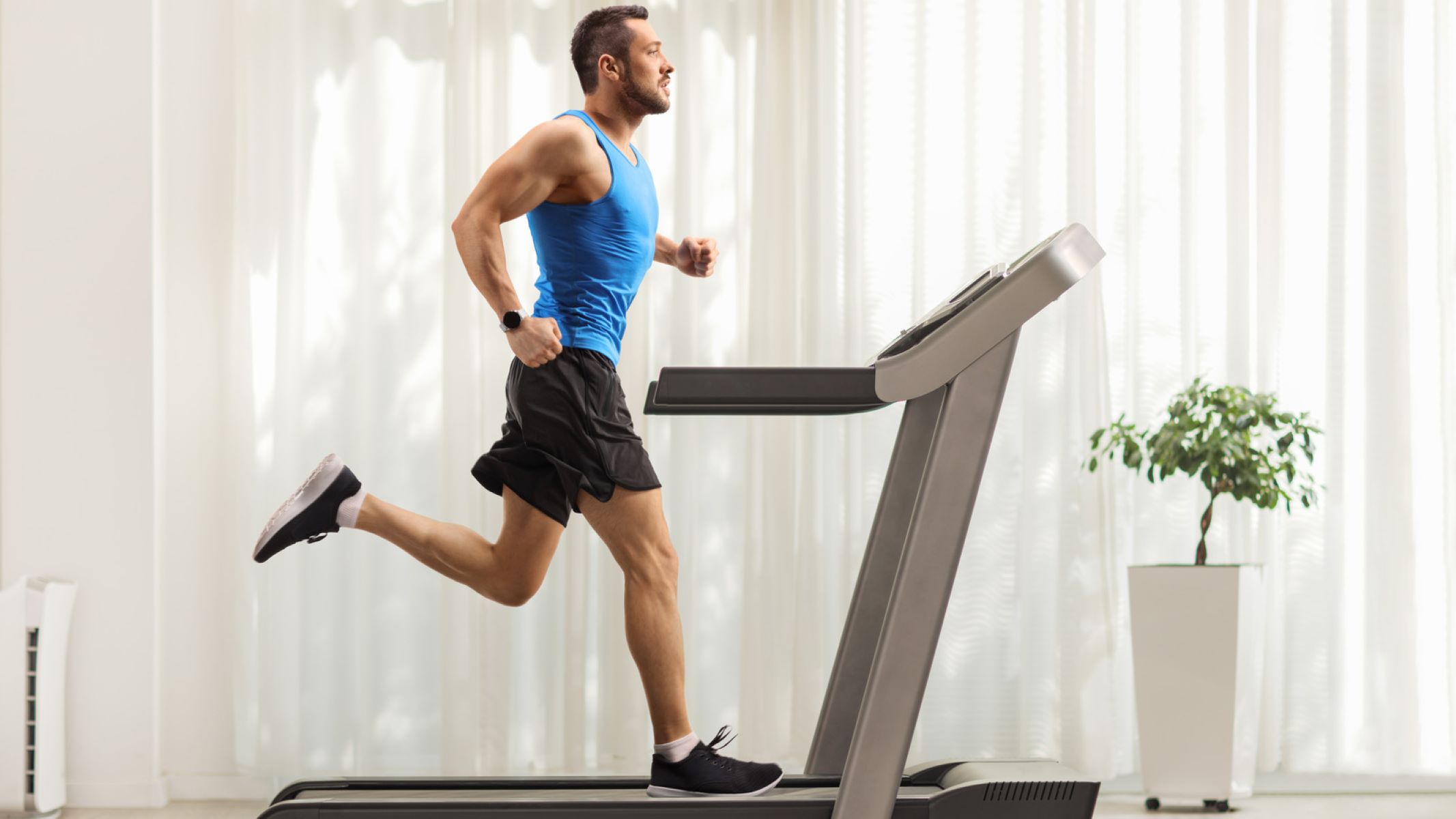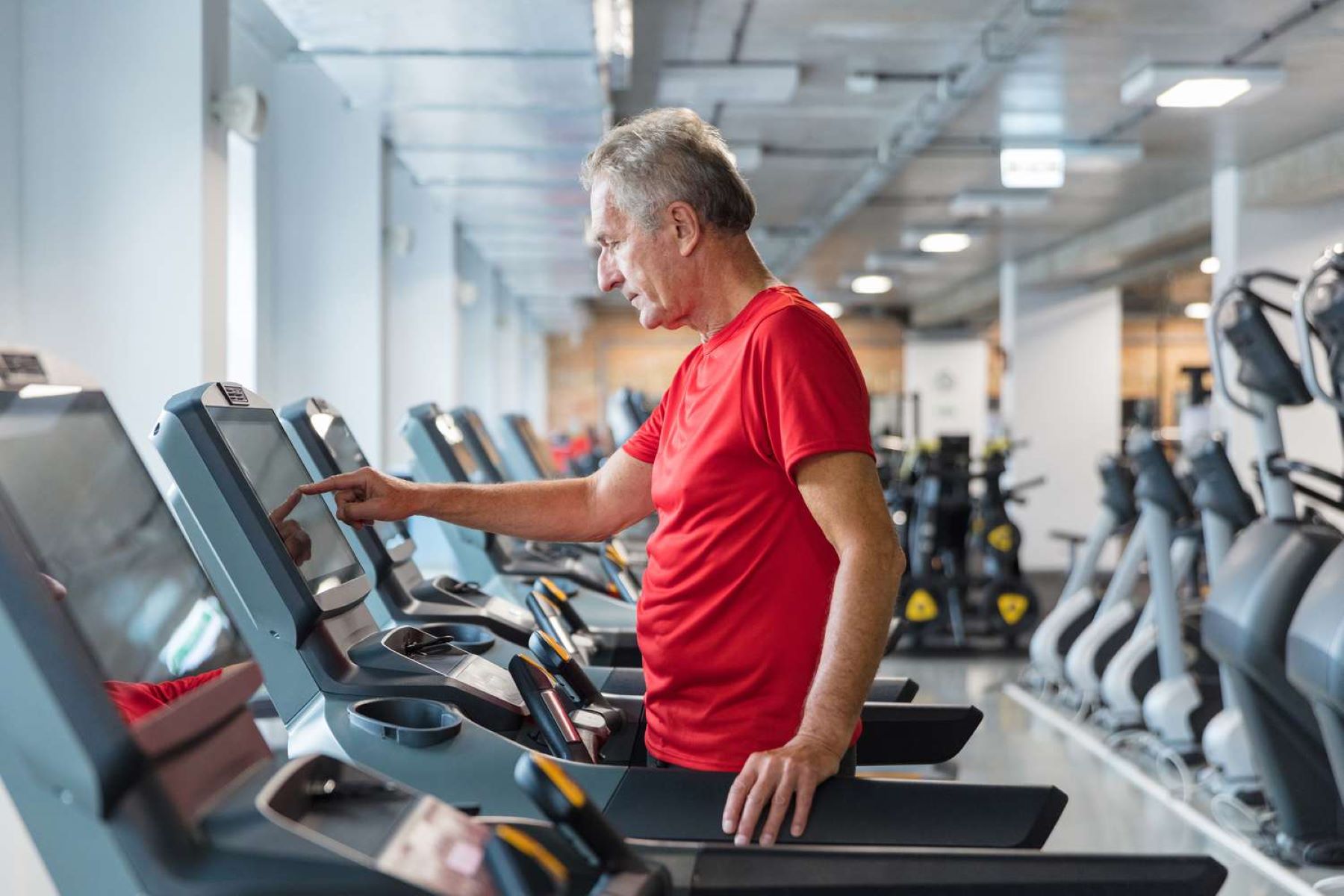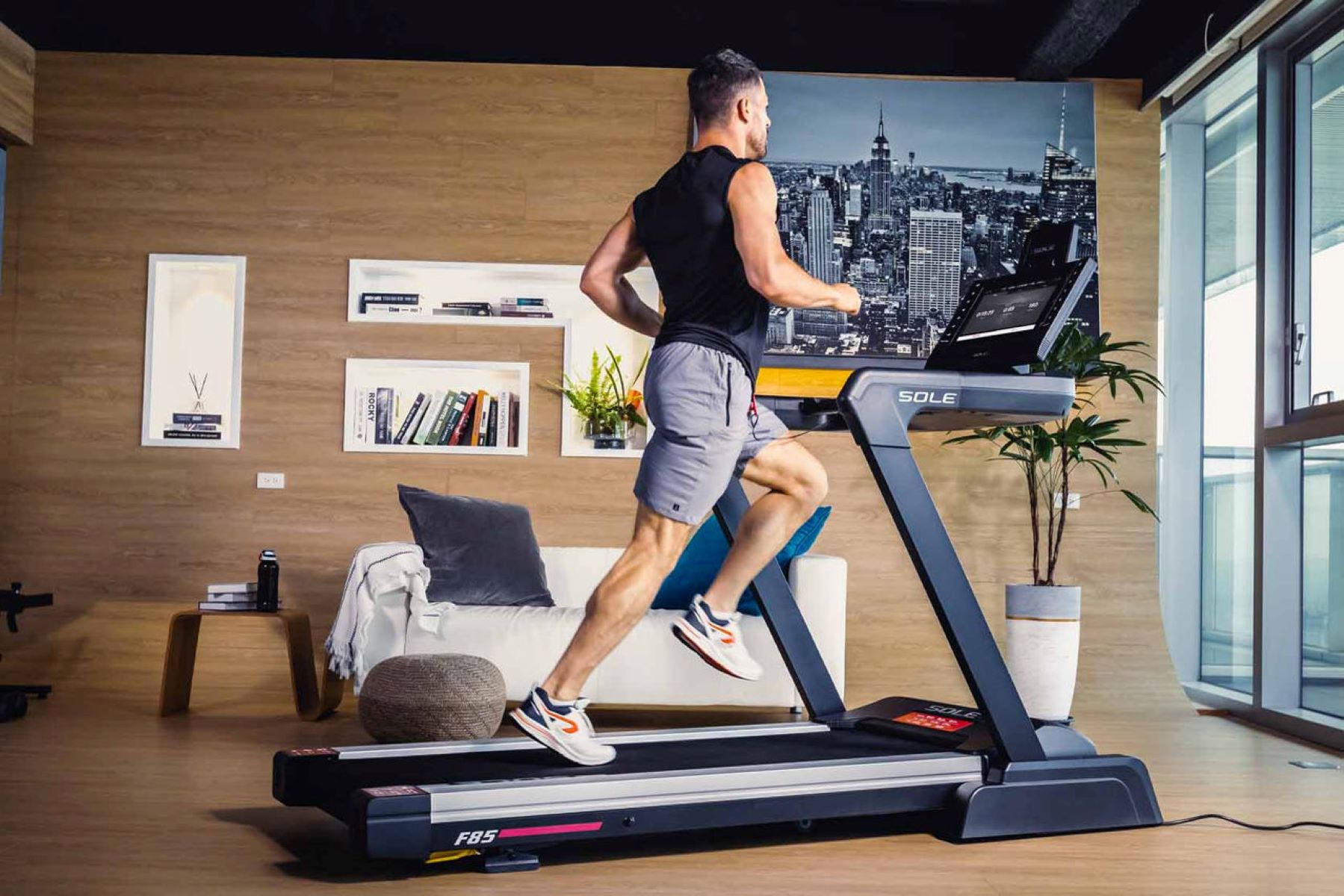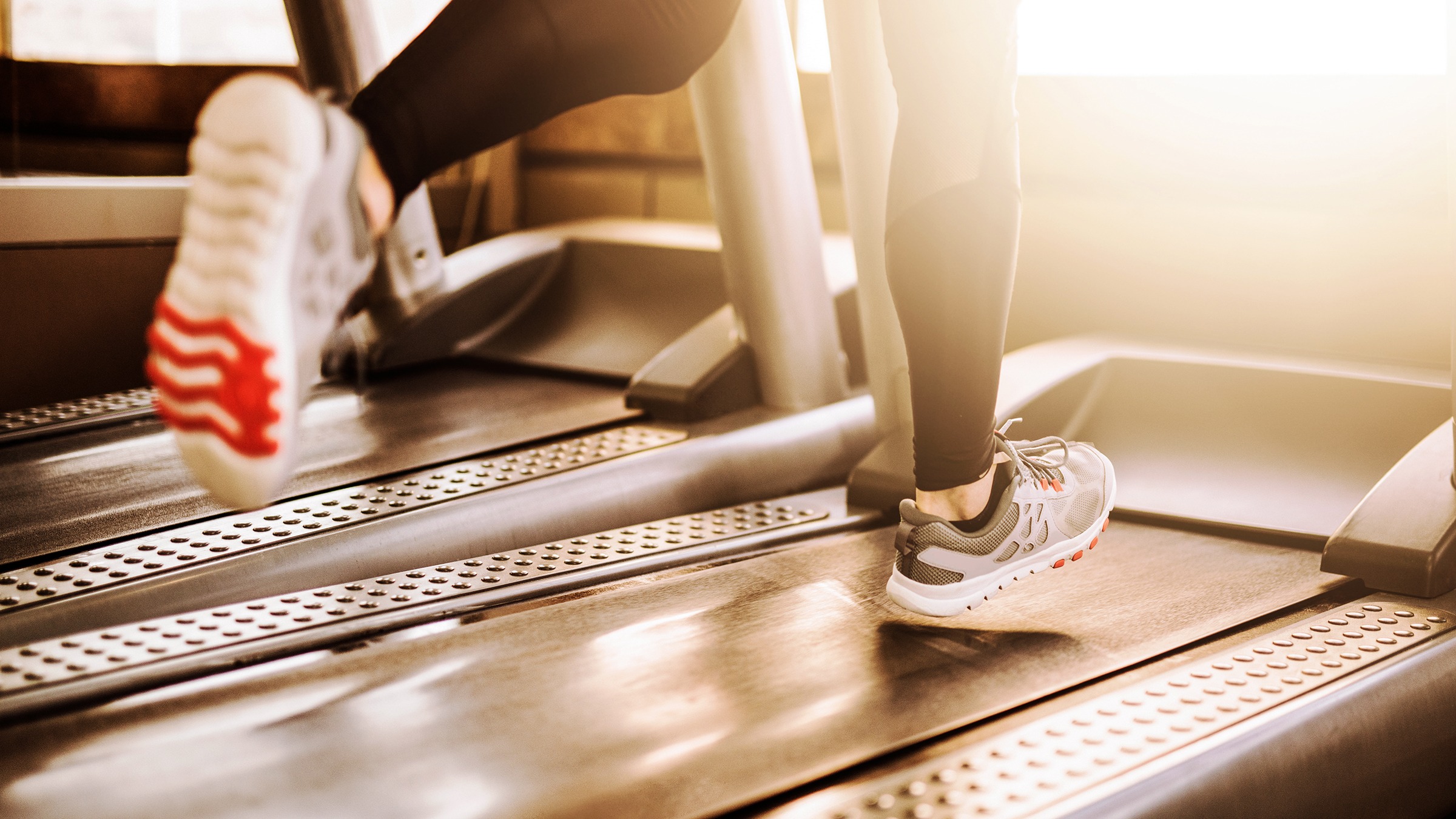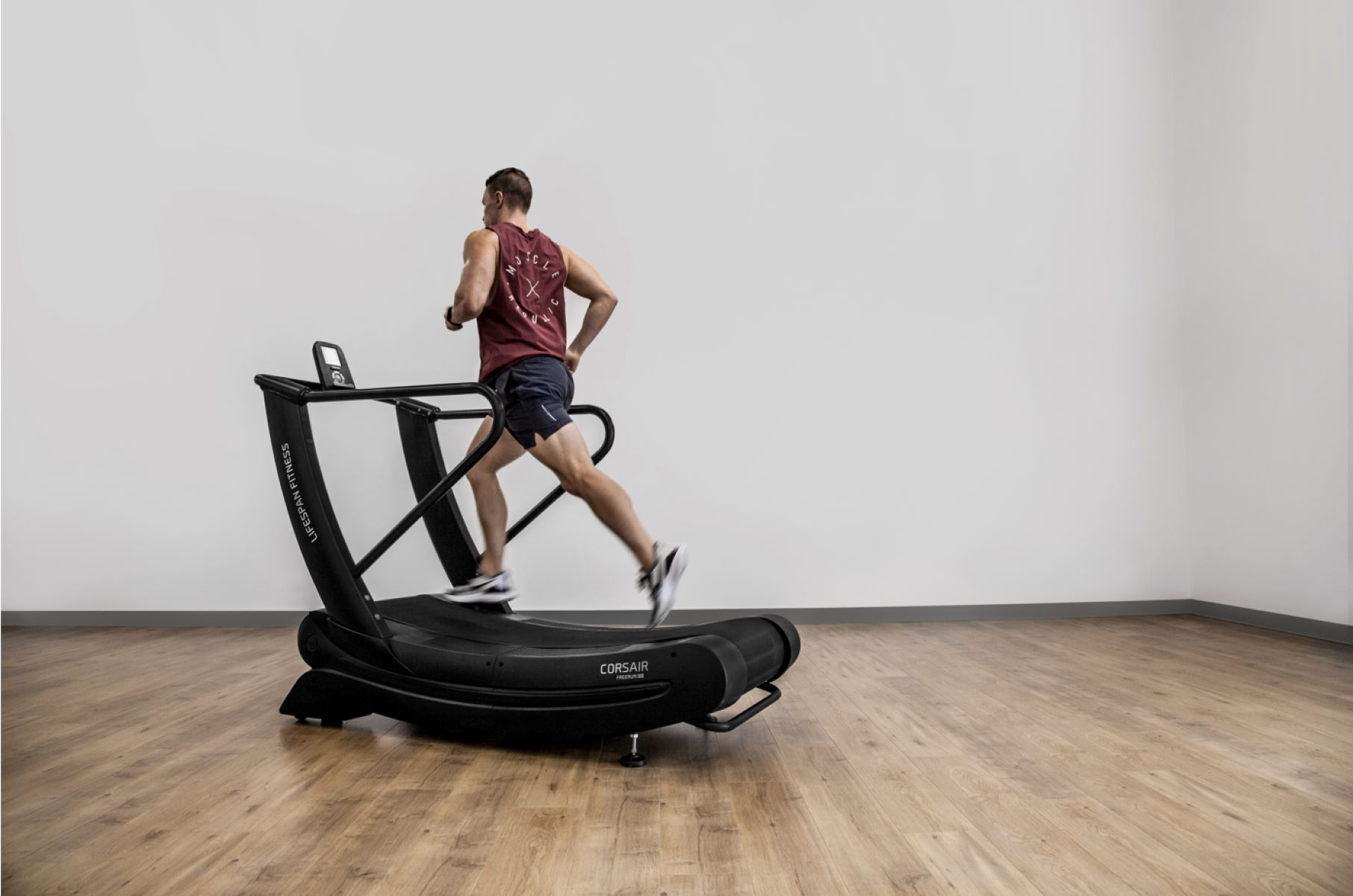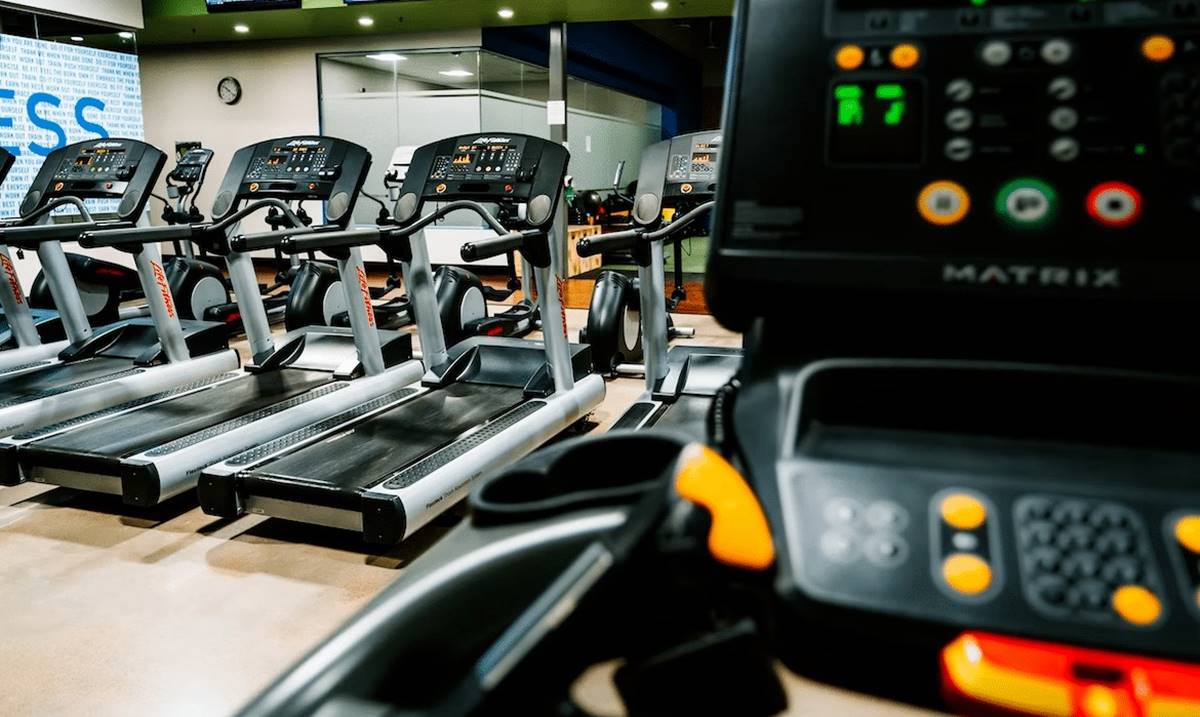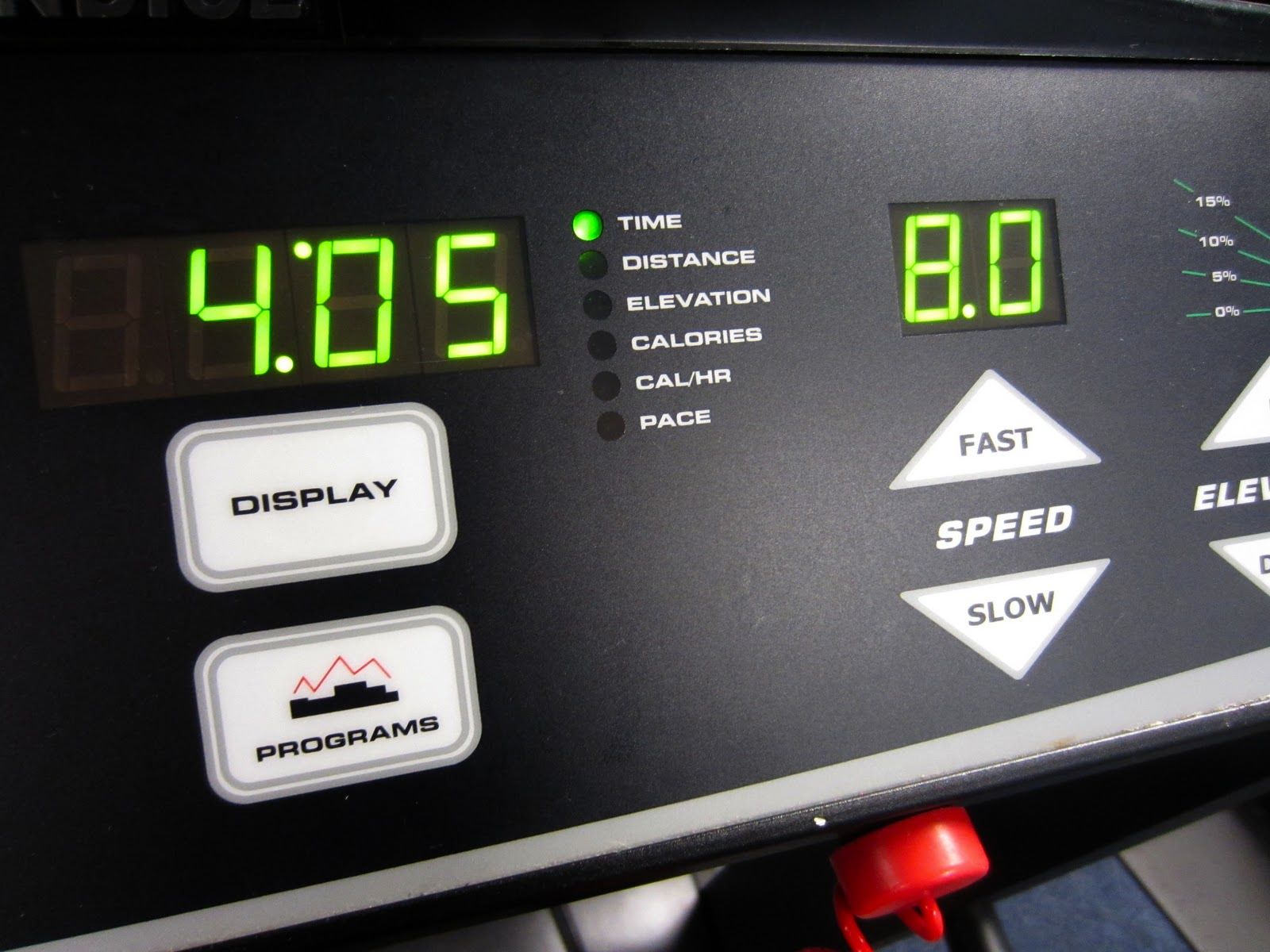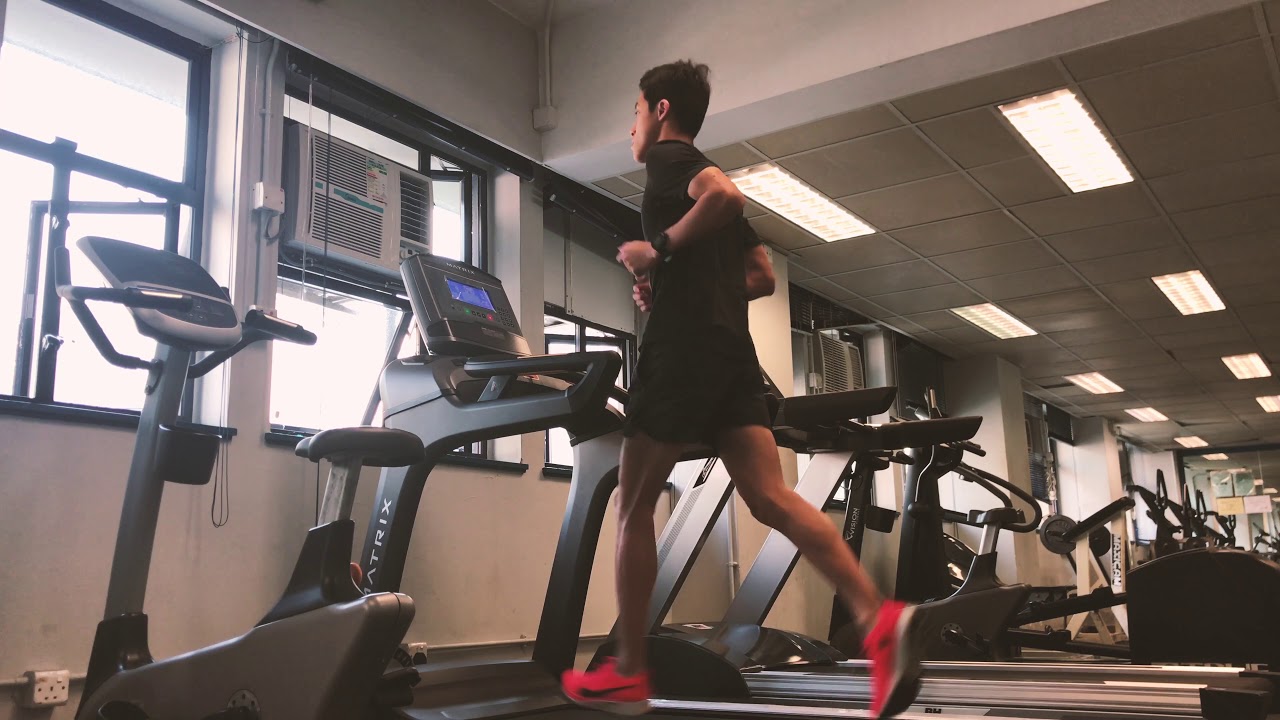

Featured
What Is Pace On Treadmill
Published: October 5, 2023
Featured: Discover the meaning and importance of pace on a treadmill. Learn how to adjust your pace for optimal workouts and achieve your fitness goals.
Introduction
Treadmills are a popular choice for individuals looking to stay active and improve their cardiovascular health. Whether you’re a seasoned runner or just getting started, understanding the concept of pace on a treadmill is crucial to maximizing your workouts and achieving your fitness goals.
Pace refers to the speed at which you run or walk on a treadmill. It is typically measured in miles per hour (mph) or kilometers per hour (km/h). Adjusting your treadmill pace allows you to challenge yourself, vary the intensity of your workouts, and target different fitness objectives.
In this article, we will delve into the world of treadmill pace, exploring the factors that affect it and the benefits of adjusting your pace during your workouts. We will also discuss how to determine your ideal treadmill pace and provide some tips for increasing it gradually over time.
Whether your goal is to increase endurance, burn calories, or enhance your overall fitness level, understanding and optimizing your treadmill pace is essential. So, let’s dive in and discover how you can make the most out of your treadmill workouts!
Understanding Treadmill Pace
Treadmill pace refers to the speed at which you are running or walking on the treadmill. It is an important component of your workout as it directly impacts the intensity and effectiveness of your exercise routine. Understanding key terms and concepts related to treadmill pace will help you make informed decisions about your workouts.
One fundamental aspect of treadmill pace is the speed at which you are moving. This is typically measured in miles per hour (mph) or kilometers per hour (km/h). The higher the speed, the faster you are running or walking on the treadmill.
Another important term to understand is the concept of incline. Treadmills often offer the ability to adjust the incline, which simulates running or walking uphill. Incline can significantly impact the difficulty and intensity of your workout. It is usually measured in percentage increments. For example, an incline of 1% means you are running on a slight uphill, while an incline of 5% implies a steeper slope.
It is essential to note that treadmill pace can vary greatly depending on your fitness level and goals. For example, a light jog may be considered a comfortable pace for one person, while it may be more intense for someone else. It is crucial to listen to your body, gradually increase your pace, and adjust it based on your goals and fitness level.
Understanding how to properly set and adjust your treadmill pace will allow you to tailor your workouts to your specific needs. Whether you are aiming for a high-intensity interval training (HIIT) session, a long-distance run, or a gentle walk, being able to control your treadmill pace is key to achieving your desired outcomes.
Factors Affecting Treadmill Pace
Several factors can influence your treadmill pace, and understanding them will help you make adjustments to optimize your workouts. Here are some key factors that can affect your treadmill pace:
- Fitness Level: Your current fitness level plays a significant role in determining your treadmill pace. Beginners may start with a slower and more manageable pace, while advanced runners may aim for higher speeds. Gradually increasing your pace as your fitness improves is important for continued progress.
- Goals: The goals you have for your treadmill workout also impact the pace at which you should be running or walking. If you’re aiming for weight loss or cardiovascular endurance, a moderate to high-intensity pace might be appropriate. On the other hand, if you’re recovering from an injury or focusing on low-impact exercise, a slower pace may be more suitable.
- Incline: Adjusting the incline of your treadmill can significantly affect your pace. Running on an incline requires more effort and engages different muscle groups, resulting in a slower pace. Conversely, running on a flat surface or with a slight decline can enable faster speeds.
- Duration: The duration of your workout can also impact your pace. If you are aiming for a brief burst of high-intensity interval training (HIIT), your pace during those intervals will be much faster than during longer endurance runs.
- External Factors: Factors such as heat, humidity, and altitude can affect your treadmill pace. In hotter environments, your body may need to work harder to cool itself, resulting in a slower pace. Similarly, running at higher altitudes with lower oxygen levels can make it more difficult to maintain a faster pace.
It’s important to take these factors into consideration and make adjustments to your treadmill pace accordingly. Experimenting with different settings, inclines, and durations will help you find the optimal pace to achieve your desired results.
Benefits of Adjusting Treadmill Pace
Adjusting your treadmill pace during your workouts can provide numerous benefits for your overall fitness and well-being. Here are some advantages of incorporating pace variations into your treadmill sessions:
- Increased Cardiovascular Endurance: By varying your treadmill pace, you can challenge your cardiovascular system and improve your endurance. High-intensity intervals at faster speeds can push your heart rate up, while slower recovery phases allow for adequate rest. This interval training can enhance your cardiovascular conditioning over time.
- Improved Weight Management: Adjusting your pace can impact the number of calories burned during a workout. Increasing the intensity by running or walking at a faster pace can help you burn more calories and contribute to weight loss or weight management goals.
- Enhanced Muscle Strength and Power: Incorporating sprints or faster intervals into your treadmill routine can strengthen your leg muscles and improve your power output. These higher-intensity efforts can target different muscle fibers and stimulate muscle growth and development.
- Diverse Workout Options: Adjusting your pace allows you to have a variety of workout options. You can choose to do a high-intensity interval training (HIIT) workout one day and a steady-state endurance run the next. This variety keeps your workouts interesting, prevents boredom, and targets different energy systems within your body.
- Mental Stimulation: Varying your treadmill pace keeps your mind engaged and focused during your workouts. The change in speed and intensity can challenge you mentally, providing a refreshing and stimulating exercise experience.
- Goal Achievement: By adjusting your treadmill pace, you can specifically target and work towards achieving your fitness goals. Whether it’s improving your mile time, increasing your endurance for a race, or simply maintaining a healthy lifestyle, adjusting your pace allows you to tailor your workouts to your desired outcomes.
Incorporating pace variations into your treadmill workouts offers a range of benefits for all fitness levels. From improving cardiovascular endurance and muscle strength to keeping your workouts engaging and enjoyable, adjusting your treadmill pace allows you to make the most out of your exercise sessions.
How to Determine Your Ideal Treadmill Pace
Determining your ideal treadmill pace is essential to maximize the effectiveness of your workouts and help you reach your fitness goals. Here are some tips to help you find your suitable pace:
- Assess Your Fitness Level: Consider your current fitness level and experience with running or walking. Beginners may start with a slower pace and gradually increase it over time, while more advanced individuals may aim for faster speeds. Honoring your fitness level ensures a safe and realistic approach to finding your ideal pace.
- Use the Talk Test: The talk test is a simple and effective way to gauge your exercise intensity. If you can comfortably hold a conversation while running or walking, your pace is likely at a moderate level. If you’re struggling to speak while gasping for breath, your pace may be too intense. Adjust accordingly to find a pace that allows you to maintain conversation but still challenges you.
- Listen to Your Body: Pay attention to how your body feels during your treadmill workouts. If you feel excessively fatigued, experience joint pain, or have difficulty maintaining proper form, it may indicate that you’re pushing yourself too hard. On the other hand, if you feel like you could easily chat or continue for much longer, you may need to increase your pace for a more challenging workout.
- Set Realistic Goals: Identify your goals for the workout. Depending on whether you’re focusing on endurance, speed, or weight loss, your pace will vary. Set specific, measurable, and attainable goals to guide you in finding your ideal treadmill pace.
- Gradually Increase Pace: Once you have determined a starting pace, gradually increase it over time to continue challenging yourself and making progress. Incremental increases in speed will prevent overexertion and reduce the risk of injury. Aim to gradually increase your pace by around 0.1-0.2 mph on each workout.
- Experiment with Intervals: Intervals can be an effective way to gauge your ideal treadmill pace. Alternate between periods of faster running or walking and recovery phases at a slower pace. Pay attention to how your body responds during these intervals and adjust your pace accordingly.
Remember that finding your ideal treadmill pace is a personal journey. It may take some trial and error, but with time and practice, you will discover the pace that works best for you and helps you achieve your fitness goals.
Tips for Increasing Your Treadmill Pace
If you’re looking to boost your treadmill pace and take your workouts to the next level, here are some tips to help you increase your speed:
- Incorporate Interval Training: Interval training involves alternating between periods of high-intensity running or walking and recovery phases. By incorporating intervals into your treadmill workouts, you can push your body to adapt to faster speeds and improve your overall pace.
- Focus on Proper Form: Maintaining proper form is essential for running or walking efficiently. Ensure you have a good posture, engage your core muscles, and land softly on your feet. By focusing on your form, you can optimize your stride and reduce any unnecessary energy expenditure.
- Gradually Increase the Speed: One of the key principles of increasing treadmill pace is gradual progression. Instead of trying to make a significant jump in speed, aim to increase your pace by small increments, such as 0.1-0.2 mph, on each workout. This gradual approach allows your muscles and cardiovascular system to adapt gradually.
- Push your Comfort Zone: Increasing your treadmill pace requires pushing beyond your comfort zone. Challenge yourself to maintain a faster speed for short bursts of time during your workout. By consistently pushing your limits, you can build your endurance and increase your overall pace.
- Utilize Incline: Adding incline to your treadmill workouts can help you build strength and speed. Running or walking on an incline engages different muscles and challenges your cardiovascular system. Gradually increase the incline to simulate running or walking uphill and boost your overall pace.
- Stay Consistent: Consistency is key when it comes to increasing your treadmill pace. Aim for regular workouts and stick to your training schedule. By staying consistent, your body will adapt more effectively to the increased speed and intensity, allowing you to progress faster.
- Mix Up Your Workouts: Incorporate variety into your treadmill workouts to prevent boredom and plateauing. Try different training protocols like tempo runs, fartlek training, or hill repeats to challenge your body in different ways and continue improving your pace.
- Stay Hydrated and Rest: Adequate hydration and rest are crucial for optimal performance and recovery. Drink plenty of water before, during, and after your workouts to stay hydrated. Make sure to get enough rest and recovery time to allow your muscles to repair and grow stronger, which in turn can improve your pace.
Remember, increasing your treadmill pace takes time and patience. Be consistent, gradually progress, and listen to your body. With dedication and practice, you’ll be able to push your limits and achieve your desired speed and fitness goals.
Common Mistakes to Avoid When Adjusting Treadmill Pace
When adjusting your treadmill pace, it’s important to be mindful of certain common mistakes that can hinder your progress or lead to injury. Here are some mistakes to avoid:
- Skipping Warm-up and Cool-down: Neglecting to warm up and cool down properly before and after your workouts can increase the risk of injury. Take a few minutes to warm up your muscles with dynamic stretches and gradually increase your pace. Likewise, cool down afterwards and incorporate static stretches to aid in muscle recovery and prevent soreness.
- Increasing Pace Too Quickly: Trying to increase your treadmill pace too rapidly can put excessive stress on your body and lead to injury or burnout. Gradually increase your speed and intensity over time to allow your body to adapt and build endurance.
- Neglecting Recovery Days: Rest and recovery days are just as important as training days. Giving yourself time to recover allows your muscles to repair and grow stronger. Ignoring recovery days can lead to overtraining, fatigue, and potential injuries.
- Poor Running or Walking Form: Maintaining proper form is crucial to running or walking efficiently and preventing injuries. Failing to maintain good posture, leaning too far forward, or overstriding can put additional stress on your joints and muscles. Focus on your form and make any necessary adjustments to optimize your pace and reduce the risk of injury.
- Not Listening to Your Body: It’s important to listen to your body and pay attention to any signs of pain or fatigue. Pushing through discomfort or ignoring warning signs can lead to injuries. If something doesn’t feel right, adjust your pace, take a break, or seek guidance from a healthcare professional.
- Ignoring the Role of Nutrition: Nutrition plays a crucial role in supporting your workouts and enhancing your performance. Failing to fuel your body with proper nutrition can impact your energy levels and hinder your ability to increase your treadmill pace. Eat a balanced diet, stay hydrated, and consider the timing of your meals to optimize your performance.
- Not Using Safety Features: Treadmills come equipped with safety features for a reason. Familiarize yourself with the emergency stop button or safety clip and ensure they’re easily accessible. Accidents can happen, and knowing how to quickly stop the treadmill can prevent potential injuries.
- Comparing Yourself to Others: It’s natural to look at other runners or walkers and compare your pace to theirs. However, everyone is at a different fitness level, and focusing on others can be demotivating or lead to overexertion. Instead, focus on your personal progress and celebrate your own achievements.
Avoiding these common mistakes will help you stay safe, minimize the risk of injuries, and optimize your progress when adjusting your treadmill pace. Remember to listen to your body, prioritize proper form and recovery, and be patient with your progress.
Conclusion
Treadmill pace is a crucial element of any treadmill workout, whether you’re a beginner or an experienced runner. Understanding the concept of pace and adjusting it according to your fitness level and goals can greatly enhance the effectiveness of your workouts and help you progress towards your desired outcomes.
Throughout this article, we explored various aspects of treadmill pace, from understanding what it means to factors that can affect it. We discussed the benefits of adjusting your pace, including improved cardiovascular endurance, weight management, and muscle strength. We also provided tips for determining your ideal treadmill pace and increasing it gradually over time.
As you embark on your treadmill journey, remember to stay mindful of common mistakes to avoid, such as neglecting proper warm-up and cool-down, increasing pace too quickly, and not listening to your body. By incorporating these tips and practices into your routine, you can optimize your workouts and reduce the risk of injury.
Ultimately, finding the ideal treadmill pace is a personal journey. It’s important to focus on your individual needs, goals, and limitations. Listen to your body, make adjustments when necessary, and celebrate your progress along the way.
So, lace up your sneakers, hop on the treadmill, and start exploring the possibilities of adjusting your pace. With dedication, consistency, and a willingness to challenge yourself, you’ll be well on your way to achieving your fitness goals and enjoying the many benefits that come with finding your ideal treadmill pace.
